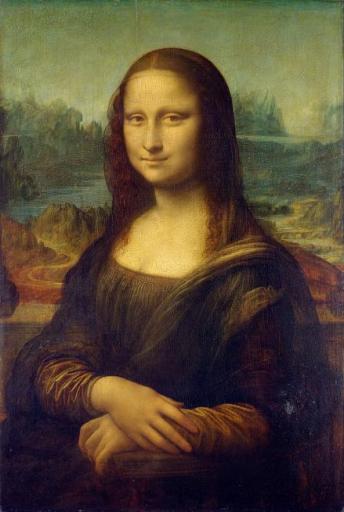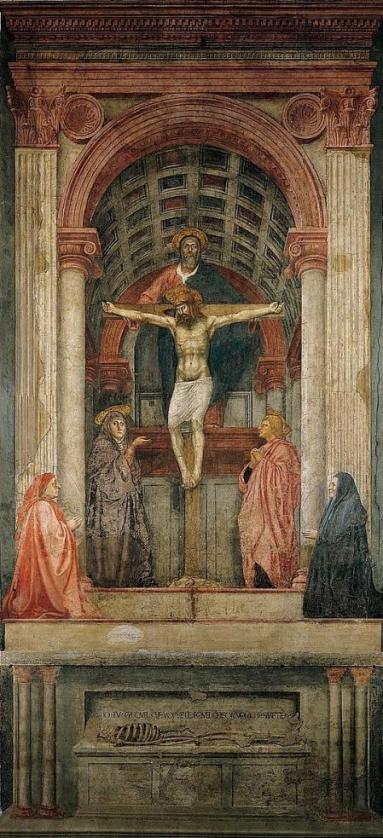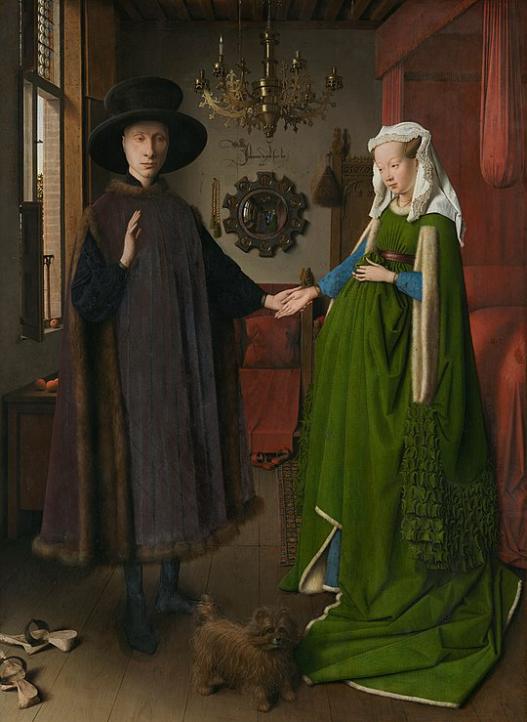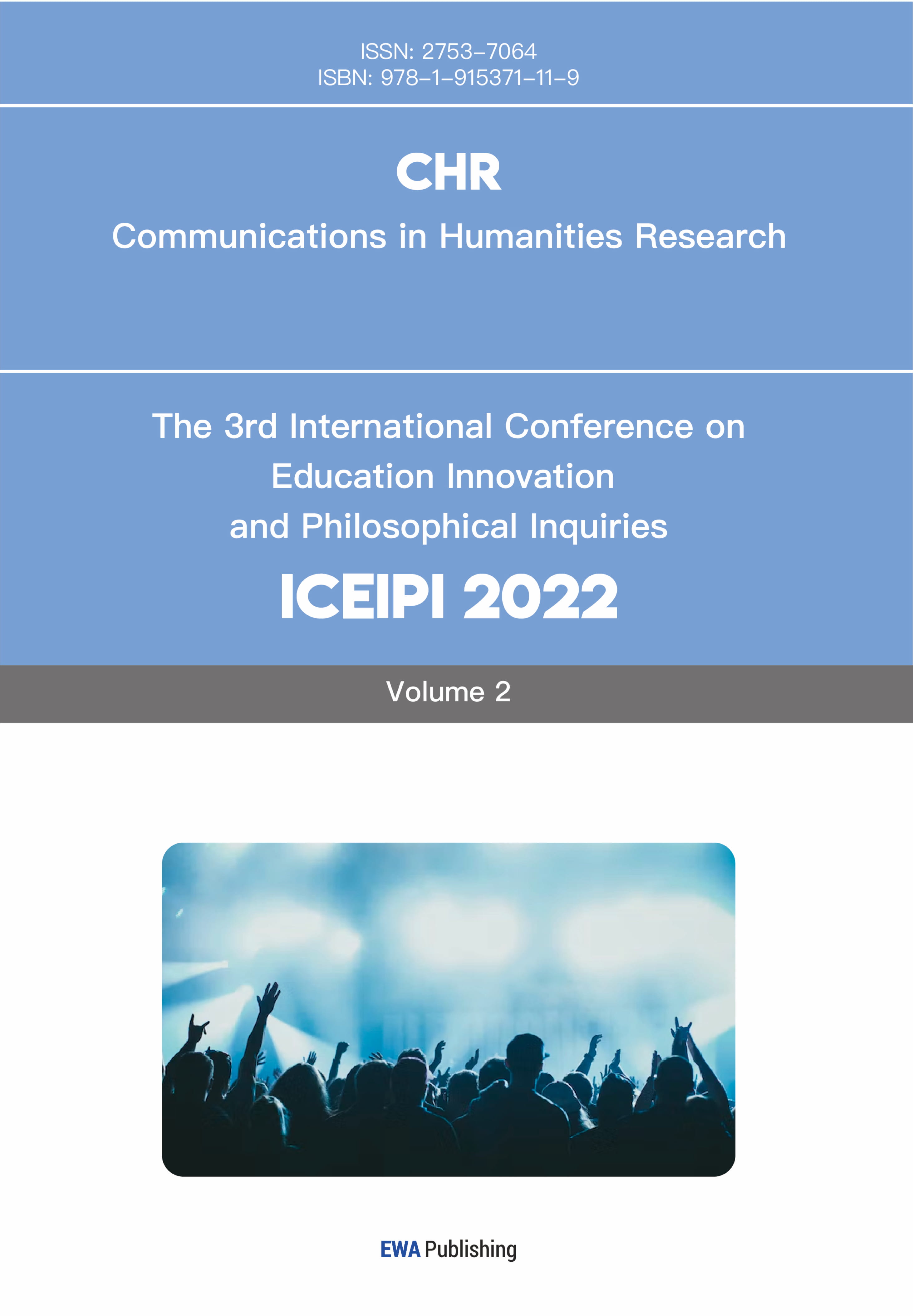1. Introduction
In 476 AD, the Western Roman Empire fell. During the millennium from the 5th century AD to the 15th century AD, European science did not continue to develop but stagnated instead of inheriting the science of ancient Greece.
The Renaissance was a cultural movement that had a profound impact on early modern European culture. It started in Italy and spread to the rest of Europe by the 16th century. The influence of the Renaissance is reflected in art, architecture, philosophy, literature, music, science, technology, politics, and religious knowledge. Renaissance scholars used humanistic methods to find realism and human emotion in art. The artists in the Renaissance created a rare situation in which art and technological activity were linked, art and science interacting with each other, both trying to reconstruct the natural world, but the former in the form of images, the latter in the form of theories and formulas. In order to seek truth and realism, the artist uses scientific methods to explore the spatial relationship, light and shadow characteristics and the secret of reproduction in nature. Renaissance painting paid great attention to the exploration of "plasticity". In order to convincingly represent the characters in the real three-dimensional space and convey the real sense of volume and weight, it is inseparable from the use of perspective [1].
Perspective is an important factor in expressing the sense of volume of objects and creating a sense of space in painting. Perspective in a narrow sense refers to the methods of linear perspective and other scientific perspectives that were gradually established in the 14th century to describe objects and reproduce space. In modern times, the scope and content of perspective have been expanded due to the study of human visual perception. Perspective in a broad sense can refer to various methods of spatial representation. Perspective can be applied to many visual fields such as painting, sculpture, photography, and product design. The current perspective methods include parallel perspective, angled perspective, oblique perspective and so on. The way that Renaissance artists used the perspective method to create space on a plane had a great influence and far-reaching significance on the future painters' creation of space in their works.
This article will analyze three different space shaping methods from the three works of the Renaissance painter Leonardo da Vinci's Mona Lisa, Masaccio's Trinity, Jan van Eyck's Portraits of Arnolfini and to introduce Da Vinci's aerial perspective method, Masaccio's vanishing point method, and how Jan van Eyck used mirrors to shape space.
This article aims to reveal the importance of creative methods in the creative process by analyzing these three paintings, and the creators will help to broaden the creative ideas from the painting ideas of these three masters. Mastering the perspective method is conducive to improving one's own observation, modeling and expressiveness, and it can be accompanied by creatively organizing the composition of the picture space.
2. Perspective Method
The "perspective" refers to the use of transparent planes to observe and explore the shape of objects. Painting is to express the people and scenery existing in the three-dimensional space on the plane drawing paper so that the viewer can have an obvious three-dimensional feeling and the illusion of the visual space on the plane figure on the drawing paper.
2.1. The Birth of the Perspective Method
Visual science before the Renaissance began with the Pythagorean theory of projection from the end of the 6th century BC to the beginning of the 5th century BC, linking the function and anatomy of the eye. This theory is limited to those explained by natural philosophy, which experienced a long accumulation phase. It was not until the beginning of the 3rd century BC that the publication of Euclid's "Sight Science" marked the establishment of this discipline. The Arabian philosopher Jindi's "On Vision" responded to Euclid's "Sight Science", criticized its unreasonableness, and made further development. After the theory of visual science was basically formed, the perspective method began to be discussed. Vision science is the interpretation of visual imaging problems, while perspective is a technique that reflects the visual appearance seen by the human eye. During the Renaissance, people realized that there was a difference between visual science and perspective, and they called the traditional visual science "natural perspective" and the latter "perspective.
Many scholars believe that the real birth of the perspective method of the Renaissance came from Brunelleschi's perspective experiments. Brunelleschi was probably best known for his experiments in linear perspective. Brunelleschi conducted his experiments in perspective with mirrors at the entrance of the Cathedral of Santa Maria del Fiore. He worked out the principle of the vanishing point, which meant that linear perspective was rediscovered. This was a novel discovery for early Renaissance Florence. His perspective experiments made a great contribution to the development of perspective, which not only provided a new theory for architecture, but also had a very profound impact on painting techniques. Through Brunelleschi's perspective experiment, the phenomenon of the "vanishing point" is explained for the first time from the perspective of the viewer [2].
2.2. The Development of the Perspective Method
Later, Leonardo da Vinci developed new insights and understandings of perspective, and based on the original perspective, he discovered aerial perspective and hidden perspective. Leonardo da Vinci attached great importance to the relationship between visual science and light and shadow and carried out a series of studies. Masaccio applied the vanishing point method to painting for the first time. On the other hand, Jan van Eyck innovatively uses mirrors to recreate space in his paintings.
3. Perspective Method in Paintings
3.1 Leonardo da Vinci’s “Mona Lisa”
3.0.1. Leonardo da Vinci
Leonardo da Vinci was born in 1452 in the small town of Florence - Vinci Town. At the age of 15, Leonardo underwent formal and traditional training in painting under the guidance of Verrochio. During that period Verozio was a famous painter and sculptor of his time, and his studio occupies an unusual place among many other famous studios in Florence. It was here that Leonardo da Vinci learned many advanced painting techniques at that time from his teacher - Verozio, and was exposed to perspective in painting techniques for the first time. Leonardo da Vinci has notable achievements in painting, meteorology, architecture, mathematics, anatomy, physiology, zoology, geometry, botany, astronomy, geology, geography, mechanics, physics, optics, invention, civil engineering and other fields. Leonardo da Vinci is known as one of three Masters of the Renaissance.
3.0.2. Leonardo da Vinci’s “Mona Lisa”
Leonardo da Vinci's painting "Mona Lisa" (see Figure 1) is a portrait, but his depiction of the landscape is not inferior. Leonardo da Vinci subjectively added natural scenery as a background for the portrait figures and used "aerial perspective" in this part of the landscape.
The character Mona Lisa occupies the middle of the picture as the close-up and visual center, while the distant view is the mountains, rivers and lakes. Leonardo da Vinci first used the composition method of figures covering the background to create the first layer of space. Next, Leonardo da Vinci expressed distance through different layers of colour. In the picture, he used red brown to depict the mountains in the close-up, and the red-brown colour matched the characters wearing dark clothing. The mountains in the middle are painted in yellow-green, and the mountains in the farthest are painted in blue green. The most noteworthy is the idea of using blue green to depict the farthest mountains in the picture.
Leonardo da Vinci liked to observe nature in daily life. Under his careful observation, he found that the mountains in the distance did not appear as dark green as the mountains near him in the past. The reason why the mountains are blue green is that the air is blue, and the distant mountains will become blue-green after being blocked by the air.
Leonardo da Vinci also made many observations about why air is blue. He found that the farther the object is from the human eye, the less clear it is, because there is a thick air between the human eye and the object, which turns the object into a blurred shadow. The colour of the shadow is the colour of the air, blue [2].
Leonardo da Vinci also discussed distance and the degree of blueness absorbed by objects. By observing, he found that the closer the object is to the human eye, the less blue is reflected to the air, and the closer the object is to its own colour, and conversely, the farther the object is from the human eye, the closer the air between the eye and the object is, the more blue the object is. He tried to quantify how blue the object was, so in the “Mona Lisa”, the mountains in the distance would appear blue green. He said: "We were able to discern, depending on the atmosphere, the different distances between buildings that seemed to stand entirely on a baseline... so you should give the first building on top of the wall a original colour, the farther one should have its outline slightly blurred, the colour a little bluer, the one that is twice as far away, and the bluer to be painted, and the one that is five times farther away, it should be five times as blue [3].”
People can indeed see the blue air that blurs the mountains in Mona Lisa. Leonardo da Vinci not only achieved a soft transition of colours, but also brought a contrast of cool and warm colours to the picture, enriching the visual experience that colours bring to the audience.

Figure 1: Mona Lisa [4]
3.2 Masaccio’s “Holy Trinity”
3.2.1. Masaccio
Masaccio was the pioneer of Italian Renaissance painting from 1401-1428. His frescoes were a milestone in humanism, and he was the first painter to use perspective, introducing the vanishing point for the first time in his paintings. His representative works include "Trinity", "Taxing Silver", "The Virgin and Child with Saint Anna" and so on. Masaccio's position in the history of Western art is largely established by the fresco "Holy Trinity" on the central wall of the left gallery of the Dominican Church of Santa Maria Novella in Florence.
3.2.2. “Holy Trinity”
"Holy Trinity"(see Figure 2) was a pioneering exploration of space characterization. The perspective used by the Trinity is called the vanishing point perspective. The "Holy Trinity" achieves a u vanishing point structure in true [5]. It is generally regarded in the field of art history as the first work to display Brunelleschi's law of perspective in public, demonstrating the effectiveness of linear perspective in the field of representation. Some scholars even believe that the Holy Trinity was a collaboration between Brunelleschi and Masaccio [6].
Masaccio tried to follow the regulations of Brunelleschi's perspective experiment when he painted "The Holy Trinity". According to the analysis of relevant scholars, the viewing distance set by Masaccio for the viewer is within the width of the fresco itself, about 7 feet (213.36 cm). The horizontal height of the viewpoint is approximately 5 feet 9 inches (about 175 cm) from the actual floor of the high church, which is the average height of an average viewer [7, 8]. This height corresponds to the fresco wall, which is close to the steps outside the baptistery where the two donors are kneeling. According to the laws of optics, when an observer's viewpoint is at the same level as the horizontal plane, its edge is in a straight line and the horizontal plane itself is not visible. In the frescoes, Masaccio used the structural line of the steps to mark the eye level in the painting. The vanishing point is hidden between this eye-level line between the two donors, and it also intersects an invisible line with the viewer's point of view on the actual church floor. After determining the position of the vanishing point in the center of the picture, what Masaccio do is ensure that each element in the perspective view, such as the building component arcades, stone pillars, and stone platforms, strictly follow the rule of "near big, far small" and all face the preset Convergence of a single vanishing point at eye level. A straight line is cleverly used to solve the inward extension of the ground space. A series of long diagonal lines mark the vanishing point from the orthogonal line of the vaulted building to the center. It is worth noting that the vanishing point in this painting is just parallel to the viewer's line of sight. The painting illusion creates a fictional building on the wall. Space, or a mixture of painting and architecture, when the audience looks up at the picture, it will have a strong sense of presence and a sense of sacred solemnity, which cannot help but make the audience feel awe.
The frame structure of Masaccio's Trinity is clearly geometric, presenting a high level of abstract space. It incorporates Brunelleschi's experience and makes a corresponding key shift from an object-based process to a more comprehensive structural system, incorporating principles underlying Brunelleschi's perspective practice [9].

Figure 2: Holy Trinity [10]
3.3 Jan van Eyck’s “Portrait of the Arnolfinis”
3.3.1. Jan van Eyck
Jan van Eyck, a painter from the Netherlands in the Renaissance, invented oil painting technology. He not only made a significant contribution to the technical application of oil painting art, but also had an ingenious conception of shaping space. In the early Renaissance, the perspective method did not spread to the Netherlands and Germany, but the painting art in the north appeared oil painting technique. The use of the oil painting technique allowed painters to depict objects more delicately and make them look more real. The use of the abbreviated method and the delicate depiction of objects created a perspective space in the picture. Although there was a lack of scientific perspective guidance at this time, Jan van Eyck’s paintings showed a profound sense of space and the three-dimensional sense and distance of the objects through precise and realistic techniques.
3.3.2. “Portrait of the Arnolfinis”
Jan van Eyck’s work "Portrait of the Arnolfinis"(see Figure 3) is a portrait of his wealthy Italian businessman friend's newlyweds at home. In the picture, the woman stands on the left and the man stands on the right. The two hold hands with each other. In fact, the man grasps the woman’s right hand. The gestures symbolize the wedding vows being made [11]. The picture also depicts many small objects with religious meanings.
It is worth noting that there is a round mirror hanging on the wall of the wedding room. This round mirror creates a mysterious atmosphere in the picture. Jan van Eyck uses the round mirror to create space in space, which extends the scenes of the space in the picture [12]. Different from the previous paintings, this mirror can reflect the second space in the picture, which can describe what happened face to face in the painting, and it becomes an important object to supplement the complete narrative. In this painting, in addition to the main couple and the wedding room they are in, Jan van Eyck uses the reflection of the mirror on the wall to draw himself into the painting. It is said that Jan van Eyck was invited by his friends to witness the wedding, thus realizing the witness of Jan van Eyck as an on-site witness and creating a narrative form of painting that was not available before. His use of mirrors also provided important reference values for later painters. The application of oil painting technology overcomes the easy drying characteristics of previous tempera paintings, allowing the painter to slowly and repeatedly transition the brush strokes to portray the texture of the mirror more realistically [13]. The real and detailed description of the mirror is inseparable from Jan van Eyck's own research on optics. The mastery of light and shadow changes and atmospheric perspective helped Jan van Eyck to push naturalism to a peak. He would pour in the light from the windows throughout the whole picture, changing gradually and subtly from bright to hazy. Everything in the interior is shrouded in quiet air and soft diffused light. Under the deep and steady light and shadow, the picture obtains a real and unified interior space.

Figure 3: Portrait of the Arnolfinis [14]
4. Conclusion
The paper analyses the perspective methods used in three Renaissance painters’representative works, namely the method of air perspective, vanishing point disappearance, and the method of using mirrors to recreate space.
After the important scientific achievements of the Renaissance were applied to the paintings, the spatial expression effect of the paintings was enhanced. The development of the art of painting is inseparable from the perspective method, and every process of the development and improvement of the perspective method will have a direct impact on the art of painting. The exploration of space by these great painters restored the reality of reality and improved the narrative of the story. They are committed to building a three-dimensional space in a two-dimensional space, in which the composition of the picture, the coolness and warmth of the color, and the expression skills of the previous and the subsequent all play an important role. They use the precise representational painting language to paint one vivid picture after another. The humanistic spirit and the author's unremitting pursuit of art are everywhere reflected, and the rich spiritual connotations left by them have had a profound and significant impact on future generations, leading painting into a new era of development. Mastering the method of space shaping is beneficial for painters to create three-dimensional space on the plane space, making their works more logical and realistic. It can further increase the visual perception of the screen.
Understanding these will help people to understand the art of painting and use painting techniques more objectively and comprehensively. Contemporary painting is developed step by step from traditional painting, and it is impossible for people to completely get rid of painting tradition when they create.
References
[1]. Dong J. (2001) On the Spatial Perspective of Painting in Renaissance Period. Journal of Wuhan University of Science and Technology. 3, 76-79.
[2]. Yan J. (2021) Leonardo da Vinci's Vision, Science and Perspective Research. Shanxi University.
[3]. Leonardo da Vinci. (2003) Treatise on Painting. Guangxi Normal University Press, 66-67.
[4]. https://en.wikipedia.org/wiki/Mona_Lisa
[5]. Peng J. (2020) Masaccio and Masolino da Panicale. Oil Painting Art. 2, 72-79.
[6]. John F. Moffitt. (2008) Painterly Perspective and Piety: Religious Uses of the Vanishing Point, from the 15th to the 18th Century. North Carolina: McFarland & Company, Inc., Publishers.
[7]. Samuel Edgerton. (2009) The Mirror, the Window, and the Telescope: How Renaissance Linear Perspective Changed Our Vision of the Universe. Ithaca: Cornell University Press. 80-86.
[8]. J. A.Richardson and J.V. Field. (1997) The Invention of Infinity: Mathematics and Art in the Renaissance. London: Oxford University Press, 43-61.
[9]. Ni M. (2018) Art and Scientific Reason: A Study of Renaissance Perspective and Its Influence. Shanghai University.
[10]. https://en.wikipedia.org/wiki/Holy_Trinity_(Masaccio)
[11]. Erwin Panofsky. (1934) Jan van Eyck's Arnolfini Portrait. 117-127.
[12]. Luo J. (2013) Space in Jan van Eyck's Paintings. Qufu Normal University.
[13]. Li D. (2016) The Influence of Perspective on the Art Style of Western Painting. Tianjin Academy of Fine Arts.
[14]. https://en.wikipedia.org/wiki/Arnolfini_Portrait
Cite this article
Li,Y. (2023). Perspective in Renaissance Paintings. Communications in Humanities Research,3,254-261.
Data availability
The datasets used and/or analyzed during the current study will be available from the authors upon reasonable request.
Disclaimer/Publisher's Note
The statements, opinions and data contained in all publications are solely those of the individual author(s) and contributor(s) and not of EWA Publishing and/or the editor(s). EWA Publishing and/or the editor(s) disclaim responsibility for any injury to people or property resulting from any ideas, methods, instructions or products referred to in the content.
About volume
Volume title: Proceedings of the International Conference on Interdisciplinary Humanities and Communication Studies (ICIHCS 2022), Part 1
© 2024 by the author(s). Licensee EWA Publishing, Oxford, UK. This article is an open access article distributed under the terms and
conditions of the Creative Commons Attribution (CC BY) license. Authors who
publish this series agree to the following terms:
1. Authors retain copyright and grant the series right of first publication with the work simultaneously licensed under a Creative Commons
Attribution License that allows others to share the work with an acknowledgment of the work's authorship and initial publication in this
series.
2. Authors are able to enter into separate, additional contractual arrangements for the non-exclusive distribution of the series's published
version of the work (e.g., post it to an institutional repository or publish it in a book), with an acknowledgment of its initial
publication in this series.
3. Authors are permitted and encouraged to post their work online (e.g., in institutional repositories or on their website) prior to and
during the submission process, as it can lead to productive exchanges, as well as earlier and greater citation of published work (See
Open access policy for details).
References
[1]. Dong J. (2001) On the Spatial Perspective of Painting in Renaissance Period. Journal of Wuhan University of Science and Technology. 3, 76-79.
[2]. Yan J. (2021) Leonardo da Vinci's Vision, Science and Perspective Research. Shanxi University.
[3]. Leonardo da Vinci. (2003) Treatise on Painting. Guangxi Normal University Press, 66-67.
[4]. https://en.wikipedia.org/wiki/Mona_Lisa
[5]. Peng J. (2020) Masaccio and Masolino da Panicale. Oil Painting Art. 2, 72-79.
[6]. John F. Moffitt. (2008) Painterly Perspective and Piety: Religious Uses of the Vanishing Point, from the 15th to the 18th Century. North Carolina: McFarland & Company, Inc., Publishers.
[7]. Samuel Edgerton. (2009) The Mirror, the Window, and the Telescope: How Renaissance Linear Perspective Changed Our Vision of the Universe. Ithaca: Cornell University Press. 80-86.
[8]. J. A.Richardson and J.V. Field. (1997) The Invention of Infinity: Mathematics and Art in the Renaissance. London: Oxford University Press, 43-61.
[9]. Ni M. (2018) Art and Scientific Reason: A Study of Renaissance Perspective and Its Influence. Shanghai University.
[10]. https://en.wikipedia.org/wiki/Holy_Trinity_(Masaccio)
[11]. Erwin Panofsky. (1934) Jan van Eyck's Arnolfini Portrait. 117-127.
[12]. Luo J. (2013) Space in Jan van Eyck's Paintings. Qufu Normal University.
[13]. Li D. (2016) The Influence of Perspective on the Art Style of Western Painting. Tianjin Academy of Fine Arts.
[14]. https://en.wikipedia.org/wiki/Arnolfini_Portrait









